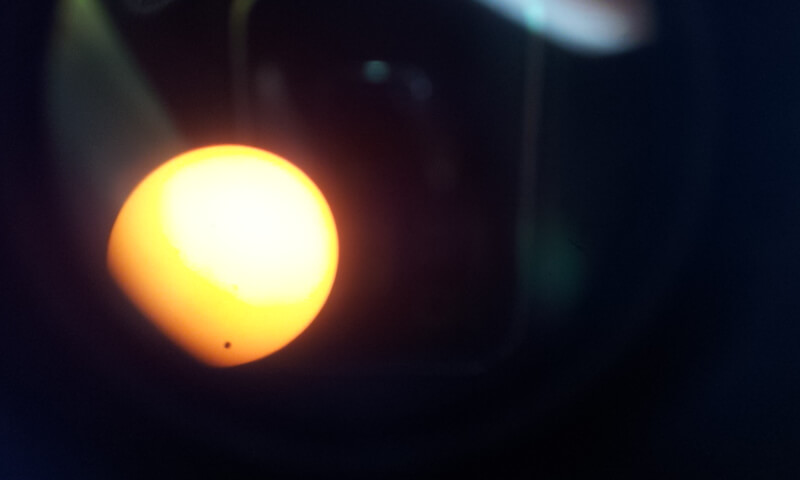At the Asher Space Research Institute they decided to hold an observation and indeed this morning there were initially a few and then a few dozen guests who experienced the experience together

Astronomers are used to watching the sky at unusual hours, but never during the day, this time professional and amateur astronomers, veterans and those who have just become acquainted with the ancient hobby, have the opportunity to watch a phenomenon that requires exposure to the sun - the transit of the planet Venus across the face of the sun from half past five in the morning until almost eight.
Although the potential for such a transit exists twice a year, it actually only occurs in pairs whose difference is about 120 years, this is due to the lack of synchronization in the planes of rotation of the two planets, which made the six transits of this type in the entire history of science from the 18th century until today a phenomenon being prepared for it.
This morning the second transit took place that completed the transit that took place in 2004, and the last in our lifetime unless one of the observers this time lives until 2117. At the Asher Space Research Institute they decided to hold an observation and indeed this morning there were at first a few and then a few dozen guests, most of them students near the telescopes operated by Prof. Ehud Bacher, head of the Asher Space Research Institute at the Technion and Dr. Shai Caspi, a joint researcher at the Technion and Tel Aviv University.
"At first the sky was not so cooperative, when heavy clouds covered the sun. The clouds accompanied us during the entire observation, but from seven thirty onward it was possible to see clearly using special eclipse glasses, dark glasses, and of course through the telescope, which was also equipped with filters to prevent the equipment from burning."
Prof. Bacher explains: "This telescope routinely serves us for an engineering project of tracking satellites. The preparation for today was mainly to prepare strong enough filters because observing the sun with the normal eye is dangerous. Even to find the sun in the viewfinder of the telescope I needed a filter. Fortunately, the faculty is located in the east direction, and as long as the sun is low on the horizon you can look at it from the lobby of the building, which on good days is considered a curse because the sun causes the building to heat up quickly in the morning and requires a strong activation of the air conditioning, this time the air conditioning allowed us to conduct an observation in comfort and protect the equipment against overheating. We did a dry run yesterday to see that the sun is where it should be and that we can get a nice picture."
Lial Asraf - physics student, second year: "I have always been an astronomy enthusiast. My friend is an astrophysicist and he is also here, it was an exciting experience. It was definitely worth getting up at five in the morning for her."

One response
Whoever says we won't see it again is right.
Who can remember that in 105 years at a certain time …….